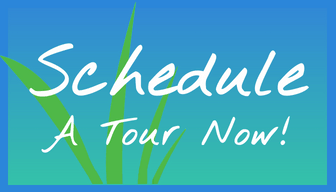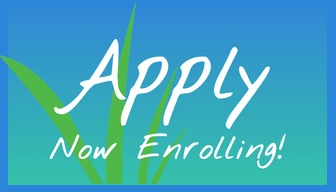 I love it when I “get” something, when my understanding deepens or changes. These are “Aha Moments” for me. Since I work with the movement of the body, I am interested in how it works and how I can work with it more effectively. I am constantly reminded of how little I know in relation to what there is to understand. It can be truly humbling. I am so grateful for those who help increase my knowledge and skills. There is nothing like a good resource — be it teacher, book, audio-visual or a fellow traveler. Teaching kinesiology has been a journey for me. I am not formally trained in anatomy or movement. Everything I have learned began with my massage education. At the beginning the focus was on individual muscles and joints. The body and movement were separated into small sections. As my experience, learning process, and exposure to more ideas and teachers progressed, I began to think in larger terms. This is a whole body working together, an interaction of parts all working in concert to accomplish what it needs to do for us to be successful in this world. This includes both body and mind. While teaching and studying the muscle man chart, I began to think that there were flow patterns associated with the arrangement of the muscles and fascia. I discovered a book, Anatomy Trains, written by a structural integrationist named Tom Myers. When I opened the cover and began browsing, I noticed he described movement as the result of both small and larger contractile arrangements. He likened the arrangement of pull lines to train lines. Local trains travel small distances like individual joint movements, and express trains are responsible for connecting larger arrangements of “pulls” over multiple joints. This is what I had been imagining, an so there it was, my “Aha”! It explained what I thought and how I was addressing the body in my work. Tom Myers studied directly with both Ida Rolf and Moshe Feldenkrais, two pioneers of bodywork theory and practice. Ida Rolf looked at structural relationships involved in movement and posture and its relationship to function. Moshe Feldenkrais focused on the nervous system and its role in development as related to movement. Combining these approaches with years of practice and exposure in many different settings, Tom has become one of the premier teachers of myofascial work and bodymind connection. We are so excited to have Tom Myers coming to the Florida School of Massage this February. I have had the privilege of studying with Tom on two different occasions and find him to be incredibly knowledgeable and inspiring. He combines theory of anatomy and development with the practical application of manual therapy. The class he is offering will focus on the pelvis. This area of the body, where upper meets lower, is essential in posture, weight distribution and movement. It is also an area where many of us carry “history”. The ability to understand the structure and function of this “meeting place” can greatly enhance our work. I encourage you to come join me and be inspired. Also, eight spaces still remain for Deane Juhan’s Breath workshop next month, December 7-9. Deane is another great teacher who offers yet more opportunities for increasing your “Aha Moments”. If this sounds interesting, check out the FSM website, under continuing education – weekend workshops. If you want to register or desire more information contact me directly at fmerillat@mac.com or by phone at (352) 371-0743.
I love it when I “get” something, when my understanding deepens or changes. These are “Aha Moments” for me. Since I work with the movement of the body, I am interested in how it works and how I can work with it more effectively. I am constantly reminded of how little I know in relation to what there is to understand. It can be truly humbling. I am so grateful for those who help increase my knowledge and skills. There is nothing like a good resource — be it teacher, book, audio-visual or a fellow traveler. Teaching kinesiology has been a journey for me. I am not formally trained in anatomy or movement. Everything I have learned began with my massage education. At the beginning the focus was on individual muscles and joints. The body and movement were separated into small sections. As my experience, learning process, and exposure to more ideas and teachers progressed, I began to think in larger terms. This is a whole body working together, an interaction of parts all working in concert to accomplish what it needs to do for us to be successful in this world. This includes both body and mind. While teaching and studying the muscle man chart, I began to think that there were flow patterns associated with the arrangement of the muscles and fascia. I discovered a book, Anatomy Trains, written by a structural integrationist named Tom Myers. When I opened the cover and began browsing, I noticed he described movement as the result of both small and larger contractile arrangements. He likened the arrangement of pull lines to train lines. Local trains travel small distances like individual joint movements, and express trains are responsible for connecting larger arrangements of “pulls” over multiple joints. This is what I had been imagining, an so there it was, my “Aha”! It explained what I thought and how I was addressing the body in my work. Tom Myers studied directly with both Ida Rolf and Moshe Feldenkrais, two pioneers of bodywork theory and practice. Ida Rolf looked at structural relationships involved in movement and posture and its relationship to function. Moshe Feldenkrais focused on the nervous system and its role in development as related to movement. Combining these approaches with years of practice and exposure in many different settings, Tom has become one of the premier teachers of myofascial work and bodymind connection. We are so excited to have Tom Myers coming to the Florida School of Massage this February. I have had the privilege of studying with Tom on two different occasions and find him to be incredibly knowledgeable and inspiring. He combines theory of anatomy and development with the practical application of manual therapy. The class he is offering will focus on the pelvis. This area of the body, where upper meets lower, is essential in posture, weight distribution and movement. It is also an area where many of us carry “history”. The ability to understand the structure and function of this “meeting place” can greatly enhance our work. I encourage you to come join me and be inspired. Also, eight spaces still remain for Deane Juhan’s Breath workshop next month, December 7-9. Deane is another great teacher who offers yet more opportunities for increasing your “Aha Moments”. If this sounds interesting, check out the FSM website, under continuing education – weekend workshops. If you want to register or desire more information contact me directly at fmerillat@mac.com or by phone at (352) 371-0743.



